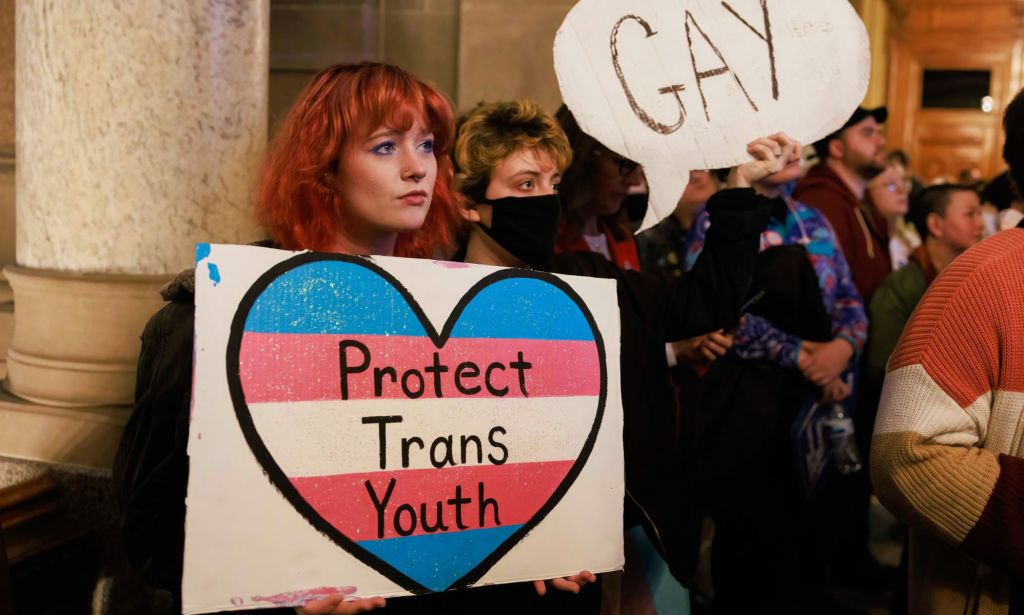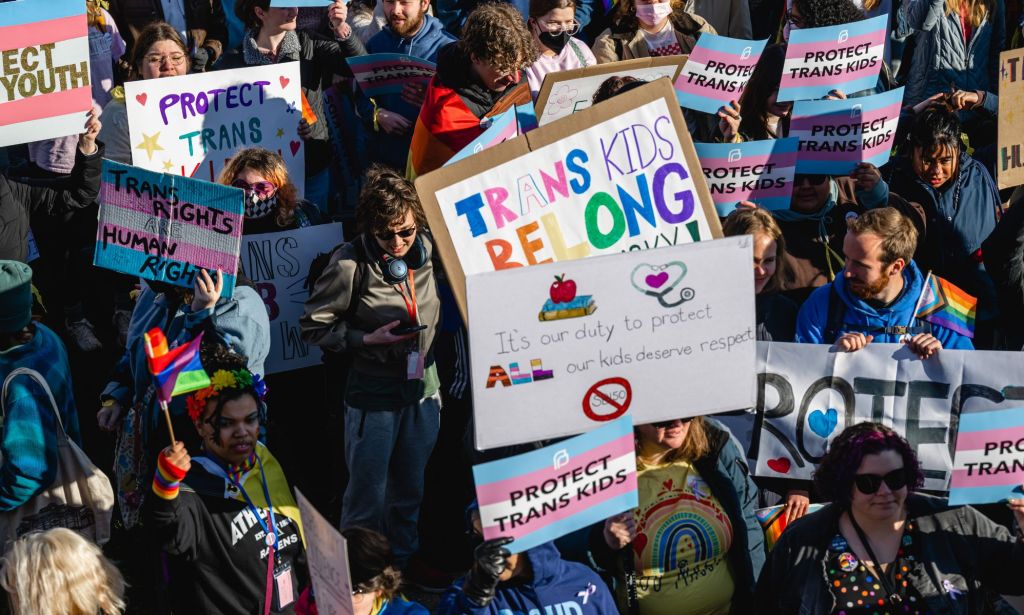Will first FDA-approved at-home test for gonorrhea, chlamydia ease the epidemic?
The Food and Drug Administration’s first-ever approval of an at-home test for chlamydia and gonorrhea could help drive earlier detection and treatment of these sexually transmitted infections amid a ballooning epidemic in the U.S. But some sexual health advocates worry that the FDA’s proposal to begin stepping up regulation of over-the-counter self-testing of STIs could backfire.
The need for new tools to combat these infections is dire.
Diagnoses of gonorrhea, chlamydia and syphilis have soared in the past two decades. Public health experts argue that this is at least partially driven by woeful long-term flat funding of the Centers for Disease Control and Prevention’s budget to fight the spread of STIs during this period.
Some public health officials and advocates expect that greater FDA oversight will help legitimize home STI testing, making it easier to get insurance coverage and actually expanding its use.
Other home tests for these three bacterial STIs are already available over the counter. But the FDA, which has not previously sought to enforce regulation or require that their manufacturers apply for formal approval, cannot vouch for their accuracy.
A consortium of LGBTQ sexual health advocates has objected to a recent FDA policy proposal that, if enacted, would require the companies already offering at-home medical tests, including for STIs, obtain regulatory approval. A central worry is that the expense of meeting the FDA’s demands could drive some companies out of the STI self-testing market and otherwise drive up the cost of the tests.
There are also concerns that the newly approved test does not cover syphilis and is not well suited to address gay and bisexual men’s needs.
The test kit, called Simple 2, does not screen for syphilis, which typically requires at least a finger-prick blood sample. There were at least 177,000 syphilis cases in 2021, a 74% increase since 2017, according to the CDC. Most concerningly, CDC data shows that rates of syphilis in newborns, which can be fatal, rose more than tenfold in the past decade.
Dr. Boghuma Titanji, an infectious disease specialist at Emory University, said that the inconvenience of having to go into a clinic was a major barrier to getting at-risk people tested for STIs.
“Just remove that requirement, that will make the access better for a lot of patients,” she said.
Dr. Leandro Mena, director of the Division of STD Prevention at the Centers for Disease Control and Prevention, believes the new at-home test’s approval will indeed increase testing for gonorrhea and chlamydia.
Self-testing, he said, provides “a tremendous opportunity to empower people to control when, where and how they get tested, and how they learn about their test result, so they can get appropriate treatment for these STIs.”
Chlamydia and gonorrhea are the most common STIs in the U.S., diagnosed in 1.6 million and 710,000 people respectively in 2021, according to the CDC. They can often be asymptomatic and are easily cured with antibiotics. However, if left untreated, the infections can lead to infertility and can be especially harmful to women, leading, for example, to pelvic inflammatory disease. They spread disproportionately among adolescents and young adults, gay and bi men, and people of color.
Will FDA oversight help or hinder the STI fight?
On Nov. 15, the FDA granted marketing authorization for adults to use the over-the-counter Simple 2 Test for gonorrhea and chlamydia, from the home-testing company LetsGetChecked. The test kit, currently sold for $99 through the company’s website, can be activated online, where the consumer fills out a health questionnaire before shipping in samples to a laboratory.
If the results are positive, the company would then put the individual in contact with a physician.
Previously, HIV was the only other sexually transmitted infection to have an FDA-approved at-home test.

Other at-home STI tests are available through telemedicine companies and major pharmacy chains. However, these tests exist in a legal gray zone. Because they’re based on samples that are not taken in a lab, they don’t qualify for an exemption from requiring FDA approval that the agency grants to so-calledlaboratory-developed tests.
The FDA has generally not sought to exert control over home-based tests. However, on Sept. 29, the agency opened a two-month public comment period on a proposed new plan to require companies offering medical self-testing kits for any purpose to seek formal marketing authorization for their products. The FDA’s move followed reports of faulty self-tests that led to undertreatment or improper treatment for heart disease and cancer.
The goal, according to the FDA, is to “ensure the safety and effectiveness of these tests.”
In response, a group that includes sexual health advocates and owners of gay dating apps that provide free at-home HIV and STI testing, began circulating a petition that calls for the FDA to exempt such public health programs from the proposed new demands. Gaining approval for existing STI tests, the petition states, would involve a “time-consuming and expensive process.”
“Many public health leaders are concerned that new FDA regulations will create additional barriers to public health testing,” said Jen Hecht, director of the consortium Building Healthy Online Communities.
Dr. Matthew Golden, who leads the HIV and STI control program at Seattle’s public health department, said that the FDA is playing catch-up in an effort to enforce regulation of an industry that has grown fast since Covid.
“At some level, the horse has left the barn,” said Golden, noting that self-testing kits have been widely used for years. However, he said that for “some of those tests, how well they perform is not well known. So cleaning this up makes sense.”
A source familiar with FDA policies and practices told NBC News that if the agency decides to demand that self-testing companies obtain regulatory approval, it would not likely interrupt the availability of existing medical self-tests during the application process.
That said, it is likely that once a critical mass of self-testing companies obtained or otherwise sought approval, the agency would go after any laggards.
Gay men’s needs are left out — for now
The Simple 2 Test is effectively geared only toward STI exposures from vaginal intercourse.
The kit can process a urine sample and a swab of the vaginal area. Chlamydia and gonorrhea infections, however, can be localized in the throat, urogenital area or rectum. A urine sample can detect urogenital infections in men and women. For people who may have otherwise been exposed through oral or anal sex, oral and rectal swabs would also be needed.
David Harvey, executive director of the National Coalition of STD Directors, said that public health experts “expect and need” the FDA ultimately to approve at-home tests for syphilis and for oral and rectal gonorrhea and chlamydia infections, “so we’re also reaching others who are at high risk, including gay men.”
The CDC’s Mena said he hoped that the agency and the FDA will confer with LetsGetChecked or other testing companies about pushing for additional approvals.
The FDA’s authorization for the Simple 2 Test was based on data indicating that consumers could successfully use the home tests, understand the results and then take any necessary subsequent action.
It’s unclear whether the test will be available outside LetsGetChecked website or whether $99 kit will be covered by insurance. The company didn’t respond to requests for comment.
Tristan Schukraft, CEO of MISTR, a telehealth company that provides the PrEP HIV prevention pill, is supportive of greater FDA oversight of home tests, but expressed concern that tighter regulation could increase the cost of testing.
“Labs are going to be required to spend additional money and resources on studies, quality systems, reagents and software systems,” Schukraft said.
In addition, MISTR requires that PrEP recipients undergo testing every three months for chlamydia, gonorrhea and syphilis. At least 85% of MISTR customers on PrEP opt for at-home testing. The company advises people who test positive — about 13.5% of the kits detect at least one STI — to seek medical care and provides assistance in connecting people to care for those who need it.
Schukraft suggested that greater regulation could lead companies to pull such tests from the market.
If so, he said, “the FDA would be doing harm to public health.”



